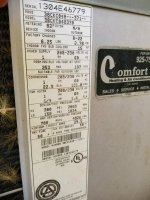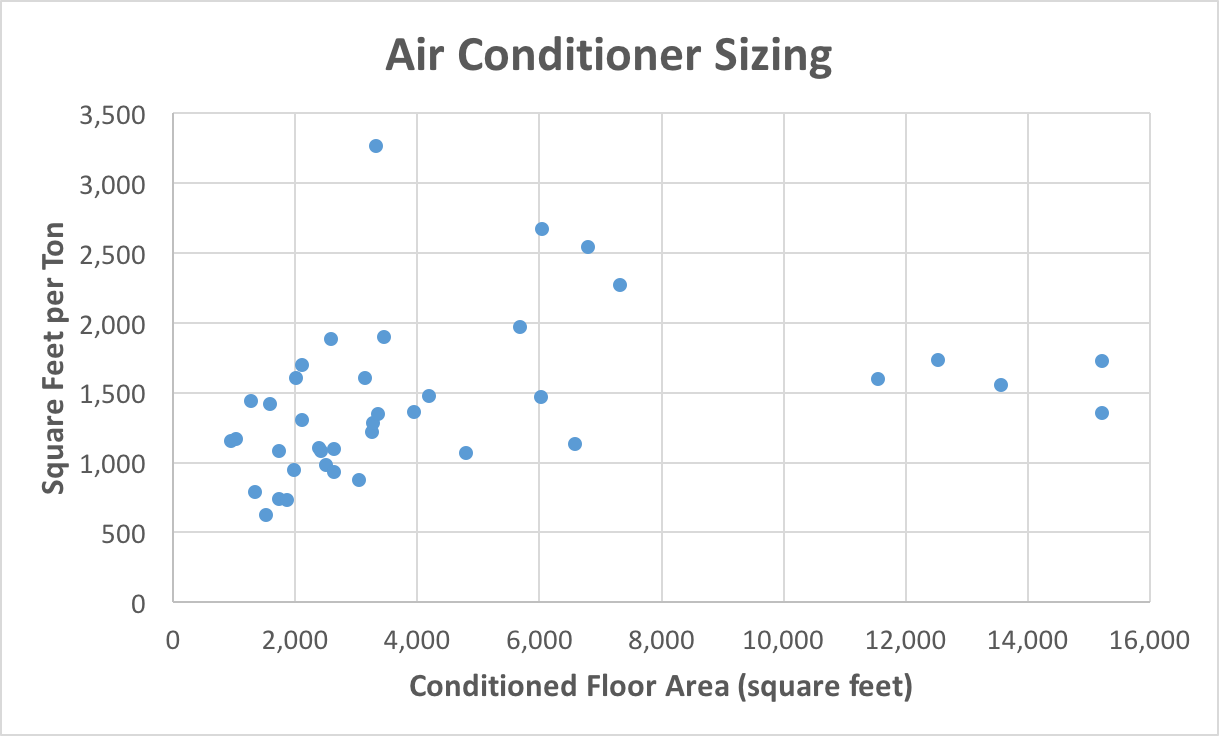R22 will be going out of production in 2020, and though it's still legal to sell "dry" R22 replacement condensers, are sure you really want to invest in an R22 future with a new condenser? A replacement condenser would have a minimum SEER rating of 13 (up from 10 for your older unit), but it's unlikely to ever "pay off" in the short life time that R22 equipment will be able to be fully supported.
Also note, a 4 ton split AC system would usually be substantially oversized for the true cooling loads of a 2 story ~2500' house (even a house with a 20' ceilings for part of the house.) Most homes that size would come in under 3 tons, many under 2 tons with the low latent loads of CA.
An Atlanta GA area HVAC guru who lives & dies by Manual-J load calculations came up with this plot of square feet per ton vs. house size on projects he's worked on, most in the steamy gulf coast states (with high latent loads, unlike your mostly negative latent loads.) If you look at the cluster of houses between 2000-4000 square feet you'll note the middle range is about 1400-1500 feet per ton, and NONE are as low as your (2500'/4 tons =) 625 feet per ton:
So your real load is probably on the order of 1.8 tons, to maybe 2.5 tons at the high end. Oversizing the equipment by that much costs more up front, and leads to lower operating efficiency & lower comfort.
It's probably better to keep the equipment you already have and move it, then next summer see if you can
get a handle on the actual cooling loads by datalogging the duty cycle of the compressor on the hotter days when afternoon temperatures at or near your
1% outside design temperature , (about 97F same as Stockton or Concord.) By using the unit itself as the measuring tool the parasitic loads of duct gains, duct leakage etc, are already built-in, but you'll then have hard data on what would be a better size for the eventual replacement.
Right now R410A is the favored refrigerant, but like R22 it's a powerful greenhouse gas (but doesn't eat the ozone layer the way R22 does.) It's possible that by the time you really NEED a replacement R410A may be on the way out, being replaced by HFO1234yf equipment or something. In your location it probably makes sense to pay the up-charge for a heat pump rather than straight AC, given California's ambitious green house emissions targets. At some point within the lifecycle of HVAC equipment it's likely that fossil fuel heating in California will be heavily taxed in one form or another, if not outright banned.
In areas with high latent loads high SEER isn't always going to be your friend, since it results in generally lower moisture removal rates, but in CA it's really the way to go. A lot of houses your size could even be cooled and heated with a 1.5- 2-ton modulating ducted mini-split with an SEER north of 20, using half the power use of your current system or less if right-sized. Carrier makes a very efficient modulating split heat pump that can be had as small as 2 tons, but it's pretty pricey compared to some of the mini-split solutions, and even the 2-tonner may be too oversized for your heating & cooling loads to really max out the comfort & efficiency. (The turn-down ratio on their Infinity Greenspeed is only 2.5:1, which is much range compared to the better mini-split options.)
Typical 99% heat loads for houses your size in CA run around 20,000 BTU/hr @ 30F, but if it's air-leaky with a lot of single pane windows it could be over 25,000 BTU/hr. If it's pretty tight without a lot of window area design heat loads under 20K are likely. Given the oversize factor of your AC I wouldn't be surprised if your existing heating equipment has output in the 60-100,000 BTU/hr range. Since you're coming in to the heating season you can sort that out with a
fuel use against heating degree-days heat load calculation this winter, with adjustments for other uses if the same fuel is being used for hot water, etc.
Most people err to the conservative side and tend to want to oversize (usually by way too much) out of fear they'll be too hot or too cold, and HVAC contractors support that, since they don't want the headache of a call-back in the event that the equipment can't keep up (which almost never happens.) If you're going to live in a place long enough to take some rudimentary measurements it's possible to get to more reasonable oversizing factors, say 1.2-1.4x rather than the more typical 2-4x. Title 24 requires that load calculations be performed, but the load calculations are often fudged by the contractors, and rarely challenged.


